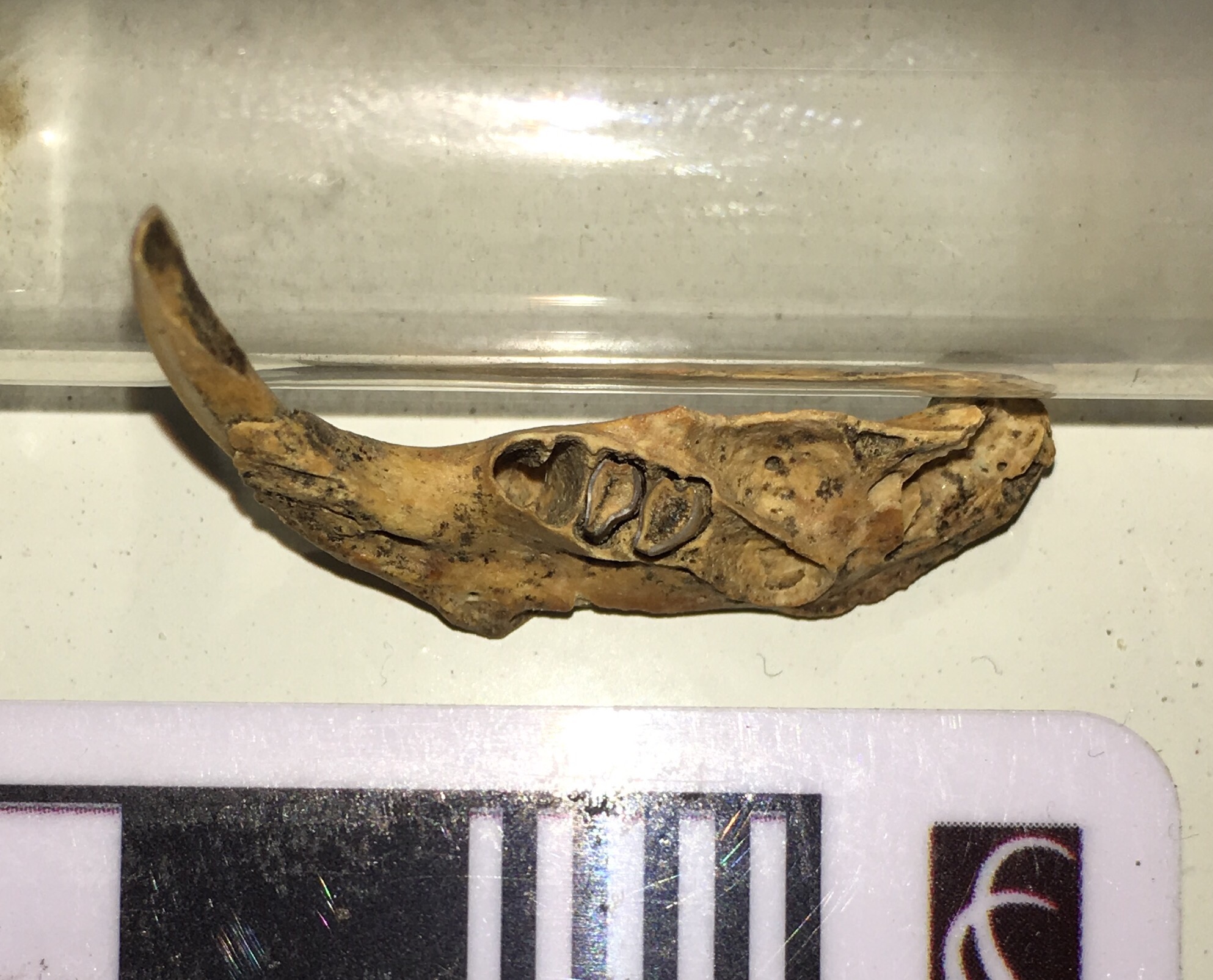 This week's Fossil Friday subject is one of the most common Pleistocene vertebrate fossils in the Diamond Valley Lake fauna; the pocket gopher.Pocket gophers are rodents from the Family Geomyidae, which first evolved in North America during the Oligocene or early Miocene. The family diversified in the late Miocene and Pliocene and is now found throughout the New World.Above is the right dentary (lower jaw) from a western pocket gopher of the genus Thomomys. It's shown in lateral view, with anterior to the right. The anterior end is dominated by the huge ever-growing incisor, which is one of the key features shared among all rodents. In medial view (below), the cheek teeth are more clearly visible:
This week's Fossil Friday subject is one of the most common Pleistocene vertebrate fossils in the Diamond Valley Lake fauna; the pocket gopher.Pocket gophers are rodents from the Family Geomyidae, which first evolved in North America during the Oligocene or early Miocene. The family diversified in the late Miocene and Pliocene and is now found throughout the New World.Above is the right dentary (lower jaw) from a western pocket gopher of the genus Thomomys. It's shown in lateral view, with anterior to the right. The anterior end is dominated by the huge ever-growing incisor, which is one of the key features shared among all rodents. In medial view (below), the cheek teeth are more clearly visible: The back end of the dentary is missing, so the condolences that articulates with the cranium and the coronoid and angular processes where the jaw muscles attach are not preserved. Adult pocket gophers have a total of 5 teeth in each half of the lower jaw, an incisor, the 4th premolar, and 3 molars. In this specimen, the 4th premolar and 3rd molar are missing, which is more obvious in dorsal view:
The back end of the dentary is missing, so the condolences that articulates with the cranium and the coronoid and angular processes where the jaw muscles attach are not preserved. Adult pocket gophers have a total of 5 teeth in each half of the lower jaw, an incisor, the 4th premolar, and 3 molars. In this specimen, the 4th premolar and 3rd molar are missing, which is more obvious in dorsal view: The 4th premolar is a bi-lobed tooth, as is clear from its empty socket. The 1st and 2nd molars are well-preserved and show typical wear for an adult pocket gopher, while the 3rd molar is missing and there's some damage to its socket.Pocket gophers are burrowing animals that make vast tunnel systems where they store their food, but they don't live in large colonies like prairie dogs and other ground squirrels. Thomomys teeth are very common in the Diamond Valley Lake deposits; they are in fact probably the most common vertebrate at DVL, making up nearly 1/3 of all the fossils found there.
The 4th premolar is a bi-lobed tooth, as is clear from its empty socket. The 1st and 2nd molars are well-preserved and show typical wear for an adult pocket gopher, while the 3rd molar is missing and there's some damage to its socket.Pocket gophers are burrowing animals that make vast tunnel systems where they store their food, but they don't live in large colonies like prairie dogs and other ground squirrels. Thomomys teeth are very common in the Diamond Valley Lake deposits; they are in fact probably the most common vertebrate at DVL, making up nearly 1/3 of all the fossils found there.
